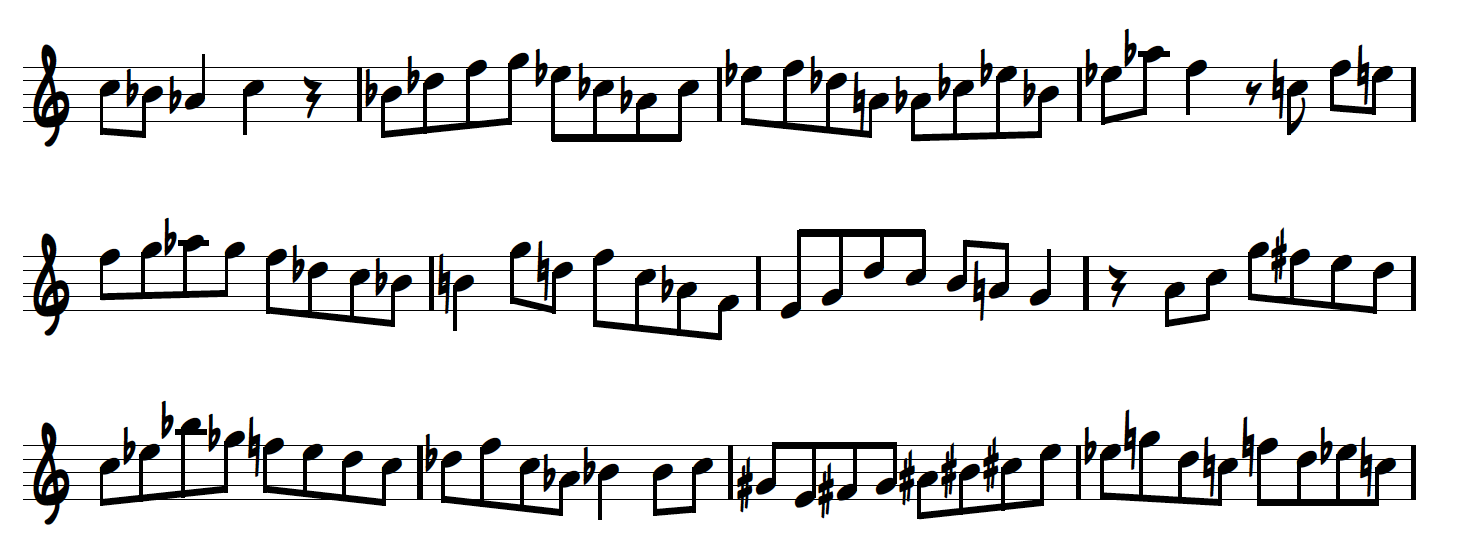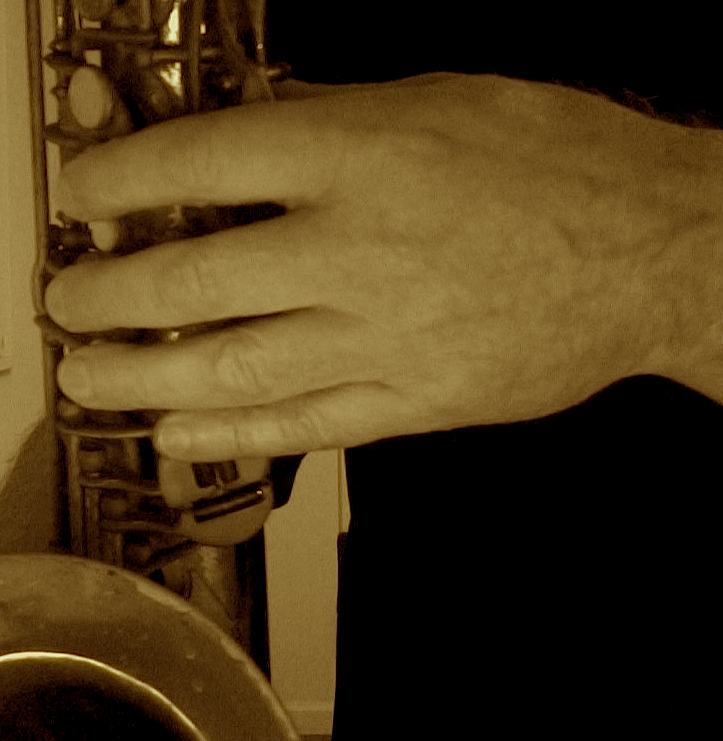I had a wonderful moment of revelation this morning as I practiced my saxophone. It was one of those experiences that helps me to better see how interconnected thought is to result when it comes to playing music (or doing anything else, for that matter). I was working on my intonation by playing long tones with a tuning CD (recorded tracks of drones consisting of fourths and fifths).
It is very challenging to play the saxophone in tune with this recording because of the nature of the saxophone overtone series. I have to play each note with a very particular internal embouchure (i.e., how I shape the inside of my mouth and throat) to stay in tune. It’s like walking on a razor’s edge. For that reason it’s great practice. It really improves my ears, and makes staying in tune with other musicians (who possess reasonable intonation capabilities) a snap.
But what I noticed today is that I would typically attack each note ever so out of tune, then within a millisecond I’d correct it. It was almost indiscernible, but it made me realize something: I’m not really imagining the pitch before I’m playing, so much as I’m reacting to the pitch I’m hearing, then correcting it.
Now, I thought I was imagining the pitch. But if I was, why was I slightly off in that first part of my attack? I thought it was time to investigate this question.
What I started doing was observing my thinking as I was playing. As I readied myself to play along with the drone, I asked myself if I was really hearing the pitch. I was sure I was, so I played. Same thing, slightly off (sharp), going immediately into tune.
How could this be? I explored this a few more times and found out something interesting about myself: I was imagining the pitch, to be sure, but I was not at all paying attention to what I was doing with myself as I did so.
So I gave it another go with the only intention being to notice what I was doing with myself as I prepared to play. What I discovered was that I was sort of “holding” my embouchure in a habitual way that wasn’t allowing me to attack the note with the kind of intonation that I was imagining. It dawned on me that I was dividing what I was imagining (the pitch) from what was going on inside my body (my embouchure as well as my head/neck/back relationship).
As I continued with this exploration, I realized that my “habitual” embouchure preparation involved tensing my neck ever so slightly, usually making me a bit sharp (flat on certain notes). I also noticed that I released this tension the moment I came in tune. (Actually, better to say the opposite: I came back in tune when I released this tension.)
In short I was reacting as opposed to directing myself with a clear intention.
Once I became aware of this, I simply gave myself a chance to integrate the two things into one whole: My imagination and my direction could be one inseparable thing. Immediately I found that I could make my attack with beautiful intonation. Consistently and easily. I was actually embodying my imagination.
I’m always so thankful for these experiences. Such great lessons that I seem to learn over and over again.

